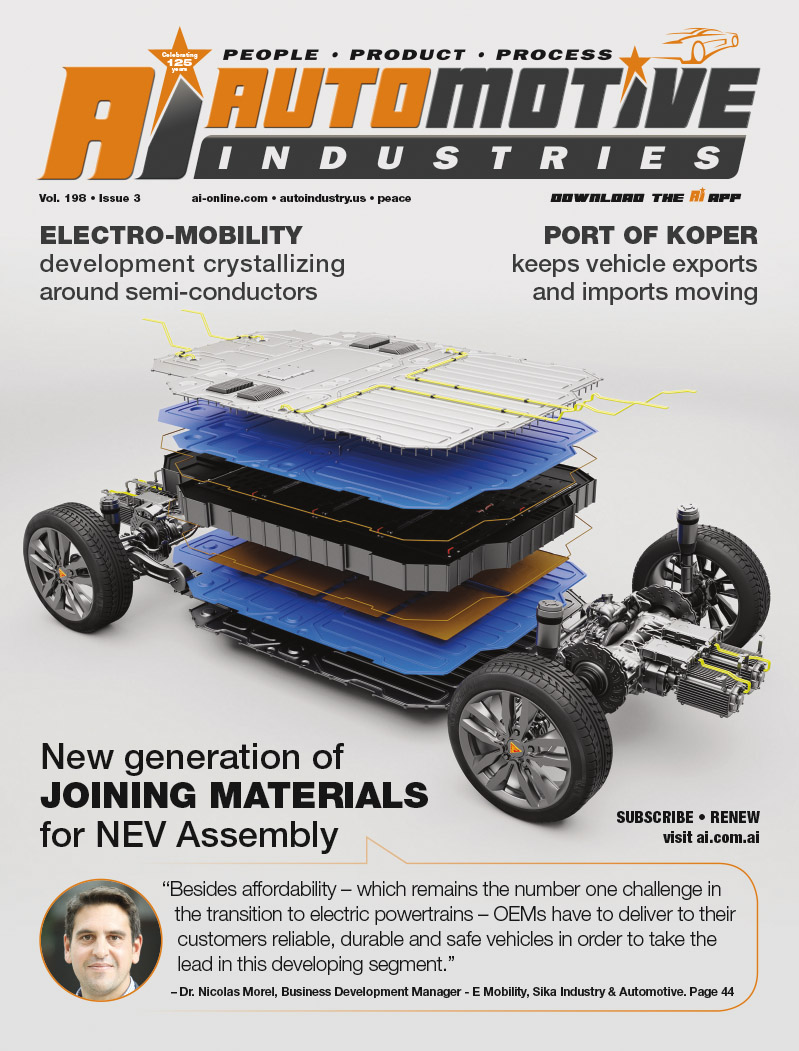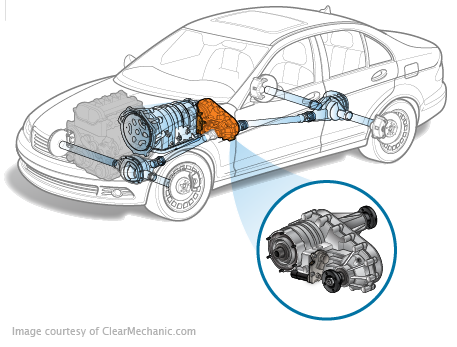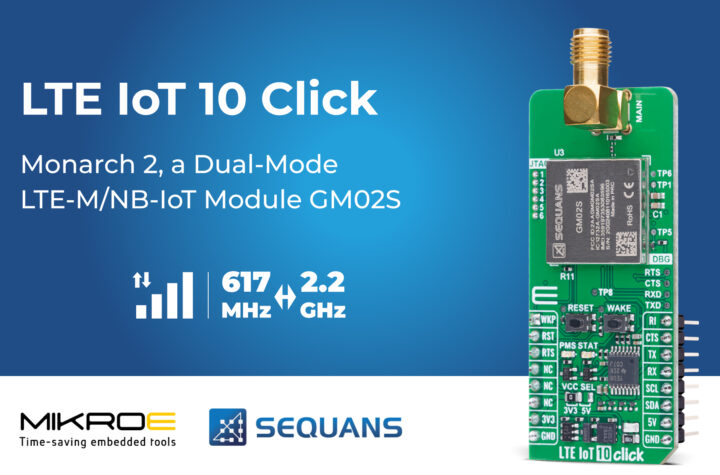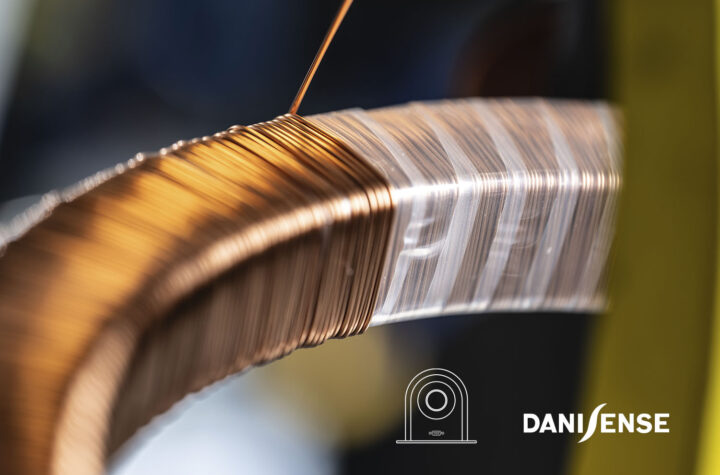
Innovation in the development of electric vehicles includes the use of new materials, as well as new combinations of materials in order to provide rigidity and safety while reducing weight in order to increase range.
This has led to the development of a new generation of adhesives capable of securely bonding different materials, and combinations of materials. In turn, electric vehicle manufacturers are now able to make increasing use of non-traditional materials such as aluminum, magnesium and carbon fiber-reinforced plastics, as well as lighter gauge sheet metal. Inside the battery compartment there are also challenges in managing heat. These materials create unique challenges in the vehicle assembly processes, which includes joining or bonding, and introduce new challenges in terms of durability, vehicle dynamics and crash performance. Automotive Industries
(AI) asked Nicolas Morel, Global Product Marketing Manager, Sika Automotive, what he sees as the main challenges facing OEMs in the manufacture of electric and hybrid vehicles. Morel: Besides affordability – which remains the number one challenge in the transition to electric powertrains – OEMs have to deliver to their customers reliable, durable and safe vehicles in order to take the lead in this developing segment. Other challenges include resolution of the charging network, charging cycle time, driving range and vehicle top speed. These are key parameters for end user adoption between the numerous brands present in the market. Challenges do not only affect the OEM, but also Tier partners along the supply chain. Nor is it only the passenger car sector. The same challenges affect the transportation segment at large. Combinations of developing platforms – hybrid or native BEV (battery electric vehicle) – present a mix of design options on component assembly, body structure, materials mix and the incorporation of NEV (new energy vehicle) or full electric drivetrain components. Adhesives and sealants play an expanded role in all cases. Therefore, specialist providers like Sika need to provide a deep range of technologies.
AI: How do your company’s products help meet these challenges? Morel: Sika is a key supplier for body structure and component assembly technologies, and is well established in that regard. Our solutions also run deep into the new powertrain systems. Key factors that directly drive performance and safety of NEVs are heat control and dissipation. Heat is the enemy of high performing battery systems. Our latest innovations for thermal management in battery systems include silicone-free thermal conductive adhesives and gap fillers providing the best performance for optimum heat transfer in battery packs and modules. Moreover, we have recently developed 2-component epoxy resins for e-motor stator encapsulation that enhance motor performance while facilitating design options, weight reduction and throughput improvements in manufacturing by cutting cycle times. Our solutions include multiple dielectric potting chemistries for controllers throughout the vehicle and on board chargers, as well as harnesses and connectors. Bonding and sealing enclosures is a Sika core competency, and we are there as well.
AI: Light-weighting for greener vehicles, as well as comfort and safety are of paramount importance – how can Sika help in all three areas? Morel: Lightweighting, comfort and safety are not new trends in our automotive business. Identified as megatrends more than a decade ago, Sika has invested in the development and application of innovative solutions in those three segments. It has been, and continues to be, a part of our DNA. Products which have been proven to meet those challenges include our novel joining solutions for multi-material assembly, lightweight reinforcement systems for crash performance improvements; as well as our industry-leading full range of acoustic parts and sound damping solutions that perfectly complement electric power train requirements. NEV powertrains offer further opportunity for deployment of high-performance Sika technology with a product range that has been selected and readied in advance of the current state.
AI: What are some of Sika’s latest technologies for new vehicles and how do they compare to traditional adhesives? Morel: In a simple view, one of the biggest challenges that comes along with electric vehicle design and manufacturing is the multiplication of, and type of materials used in construction of the electric power train. The challenges are answered with our extensive range of products and knowledge because we have prepared in the past for the future. We also have a broad pallet to select from based on our global portfolio – 1C, 2C and boosted PUR, silicone, STP, MMA, epoxy, hybrids, dispersion coatings, hotmelts and PSA. There are many different approaches between our customers that are answered by our full product range approach. We continue to be creative in developing new bonding solutions that overcome challenges in diverse applications; adhesion on bare metals, plastics and composites while offering answers to heat and glycol resistance, as well as to accommodate the constant delta-alpha effects when joining multi-materials – all in cold assembly process conditions.
AI: What are the challenges in battery box construction for EV cells? How has Sika managed to find effective solutions? Morel: There are two primary areas where selected materials need to outperform in the battery cell operating environment: heat transfer and fire resistance. Sika offers a wide range of thermal conductive and fire-resistant silicone-free bonding systems that allow optimal assembly and long-term performance of battery cells. Further, we combine our intumescent coatings to avoid heat runaway in battery modules, and to protect in an ultimate failure situation by suppressing the spread of smoke and fire outside of the battery box. Our product range specific to battery components has been tailored to where we can best add value with performance, or simply put our products offer value add.
AI: Give us an idea of the importance of R&D to Sika and how the company works with customers to find solutions for the vehicles of tomorrow? Morel: Courage for Innovation is one of our company’s five core values. It is echoed in the culture of our company, and in the way we approach our customers. We walk the talk. Customer partnership is in our DNA. R&D is a vital investment. We seek interaction and customer partnerships that lend themselves to further technological reach. We are also an anticipatory organization, which means that products which are available today were blueprinted several years ago based on shared vision and to address megatrends. Our R&D efforts continue to yield tomorrow’s products – realizing tomorrow is often five years away. The entire organization remains engaged in partnership relationships with customers and with industry consortiums which contributes to a clearer view of tomorrow’s vehicle needs no matter what form they take.
AI: What is Sika Automotive’s strategy over the next five years in terms of the fast-changing automotive landscape? Morel: We continue to be customer focused and very active in the market segments we serve, while we continue to analyze and answer global megatrends. We are not driven by headlines, but through proactive analysis of customer future needs. If you are referring directly to E vehicle powertrain transformation, a key to a fast-changing environment is to realize the opportunity that change presents. We are, and continue to be, a solution provider in our core competencies of bonding, damping, sealing, reinforcing and protecting to help to build better vehicles no matter what form they take. Over a five-year planning timeframe, we expect bonding and sealing to grow more relevant in the value chain and we are currently addressing the next generation of challenges ahead of the need. While the landscape may change, and applications may morph along with change, Sika’s constant focus is that our solutions remain added value to our customers.















More Stories
Automating ECU testing for automotive transfer cases using HIL
New LLC Switcher IC From Power Integrations Delivers 1650 W of Continuous Output Power
LTE IoT 10 Click Click board from MIKROE provides reliable IoT connectivity